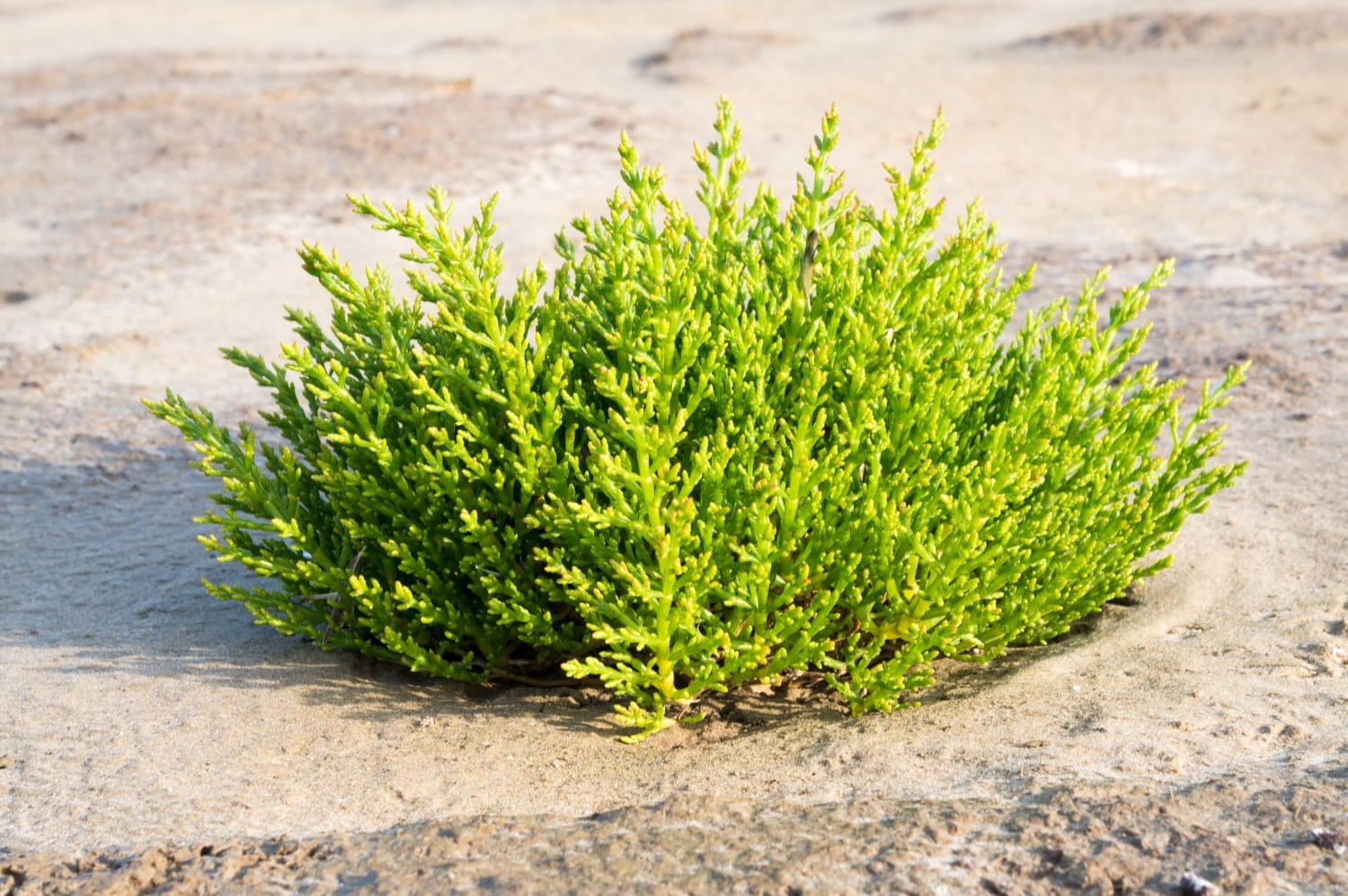
What is Salicornia? Salicornia, often called sea asparagus or glasswort, is a unique plant that thrives in salty environments like coastal marshes and mangroves. This succulent is not just a survivor but a culinary delight, adding a salty crunch to dishes. Why should you care about Salicornia? It's packed with nutrients, making it a healthy addition to your diet. Plus, it plays a crucial role in ecosystems by stabilizing soil and providing habitat for wildlife. Whether you're a foodie, a gardener, or an environmental enthusiast, Salicornia offers something intriguing. Ready to learn more? Let's dive into 15 fascinating facts about this remarkable plant!
Key Takeaways:
- Salicornia, also known as sea asparagus or glasswort, is a resilient plant that thrives in salty environments, providing essential nutrients and culinary versatility while benefiting coastal ecosystems.
- With its ability to grow in saline conditions, Salicornia offers a unique flavor and texture for culinary use, while also playing a vital role in stabilizing coastal soils, filtering pollutants, and supporting wildlife in its ecosystem.
What is Salicornia?
Salicornia, also known as sea asparagus or glasswort, is a succulent plant that thrives in salty environments. Found in coastal areas, it has a unique ability to grow in saline conditions where most plants can't survive. Let's dive into some fascinating facts about this resilient plant.
Salicornia's Unique Habitat
Salicornia's ability to thrive in salty environments makes it a standout in the plant world. Here are some interesting details about its habitat:
- Salicornia grows in salt marshes, mangroves, and coastal areas.
- It can tolerate high levels of salinity, which would be lethal to most other plants.
- This plant often grows in intertidal zones, areas that are underwater at high tide and exposed at low tide.
- Salicornia can also be found in estuaries, where freshwater mixes with seawater.
Nutritional Benefits of Salicornia
Not only is Salicornia unique in its habitat, but it also offers several nutritional benefits. Here are some key points:
- Salicornia is rich in vitamins A, C, and D.
- It contains minerals like calcium, magnesium, and potassium.
- This plant is a good source of antioxidants, which help protect cells from damage.
- Salicornia is low in calories but high in fiber, making it a healthy addition to diets.
Culinary Uses of Salicornia
Salicornia's unique flavor and texture make it a popular ingredient in various cuisines. Here are some ways it's used in cooking:
- Often used as a salad ingredient for its crunchy texture and salty flavor.
- Can be pickled and used as a condiment or side dish.
- Frequently added to seafood dishes to enhance the oceanic flavor.
- Sometimes used as a garnish for its vibrant green color and unique taste.
Environmental Importance of Salicornia
Salicornia plays a crucial role in its ecosystem. Here are some ways it benefits the environment:
Salicornia: A Hidden Gem
Salicornia, often overlooked, packs a punch in both nutrition and versatility. This succulent thrives in salty environments, making it a sustainable crop in areas where other plants struggle. Its high nutrient content—rich in vitamins, minerals, and antioxidants—makes it a superfood worth adding to your diet. Beyond the kitchen, Salicornia has potential in biofuel production and soil remediation, showcasing its environmental benefits.
Whether you're a foodie looking to spice up your meals or an eco-conscious individual seeking sustainable options, Salicornia offers something for everyone. Its unique flavor and health benefits make it a standout ingredient, while its environmental impact highlights its importance in sustainable agriculture. So next time you spot Salicornia at the market, give it a try. You might just find a new favorite ingredient and contribute to a greener planet.
Frequently Asked Questions
Was this page helpful?
Our commitment to delivering trustworthy and engaging content is at the heart of what we do. Each fact on our site is contributed by real users like you, bringing a wealth of diverse insights and information. To ensure the highest standards of accuracy and reliability, our dedicated editors meticulously review each submission. This process guarantees that the facts we share are not only fascinating but also credible. Trust in our commitment to quality and authenticity as you explore and learn with us.


